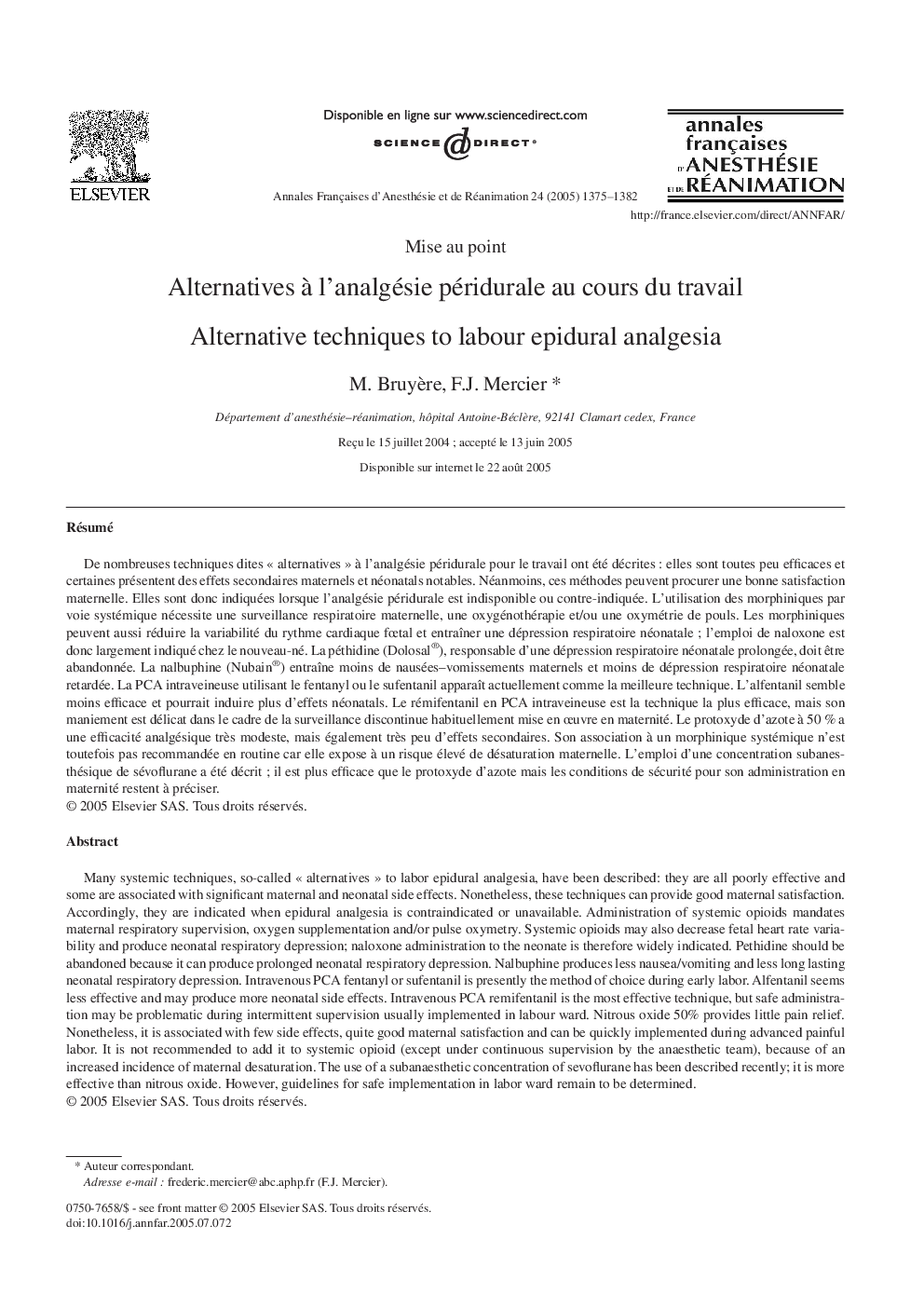| Article ID | Journal | Published Year | Pages | File Type |
|---|---|---|---|---|
| 9091568 | Annales Françaises d'Anesthésie et de Réanimation | 2005 | 8 Pages |
Abstract
Many systemic techniques, so-called « alternatives » to labor epidural analgesia, have been described: they are all poorly effective and some are associated with significant maternal and neonatal side effects. Nonetheless, these techniques can provide good maternal satisfaction. Accordingly, they are indicated when epidural analgesia is contraindicated or unavailable. Administration of systemic opioids mandates maternal respiratory supervision, oxygen supplementation and/or pulse oxymetry. Systemic opioids may also decrease fetal heart rate variability and produce neonatal respiratory depression; naloxone administration to the neonate is therefore widely indicated. Pethidine should be abandoned because it can produce prolonged neonatal respiratory depression. Nalbuphine produces less nausea/vomiting and less long lasting neonatal respiratory depression. Intravenous PCA fentanyl or sufentanil is presently the method of choice during early labor. Alfentanil seems less effective and may produce more neonatal side effects. Intravenous PCA remifentanil is the most effective technique, but safe administration may be problematic during intermittent supervision usually implemented in labour ward. Nitrous oxide 50% provides little pain relief. Nonetheless, it is associated with few side effects, quite good maternal satisfaction and can be quickly implemented during advanced painful labor. It is not recommended to add it to systemic opioid (except under continuous supervision by the anaesthetic team), because of an increased incidence of maternal desaturation. The use of a subanaesthetic concentration of sevoflurane has been described recently; it is more effective than nitrous oxide. However, guidelines for safe implementation in labor ward remain to be determined.
Keywords
Related Topics
Health Sciences
Medicine and Dentistry
Anesthesiology and Pain Medicine
Authors
M. Bruyère, F.J. Mercier,
